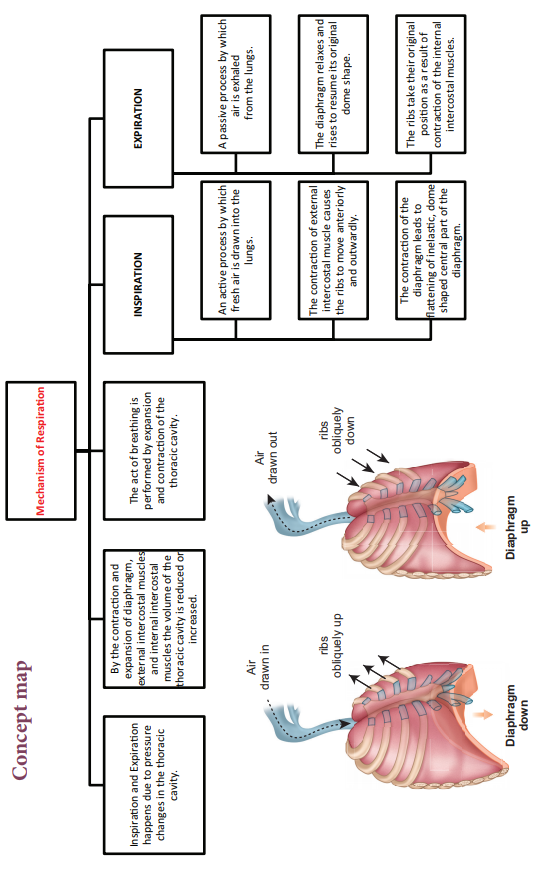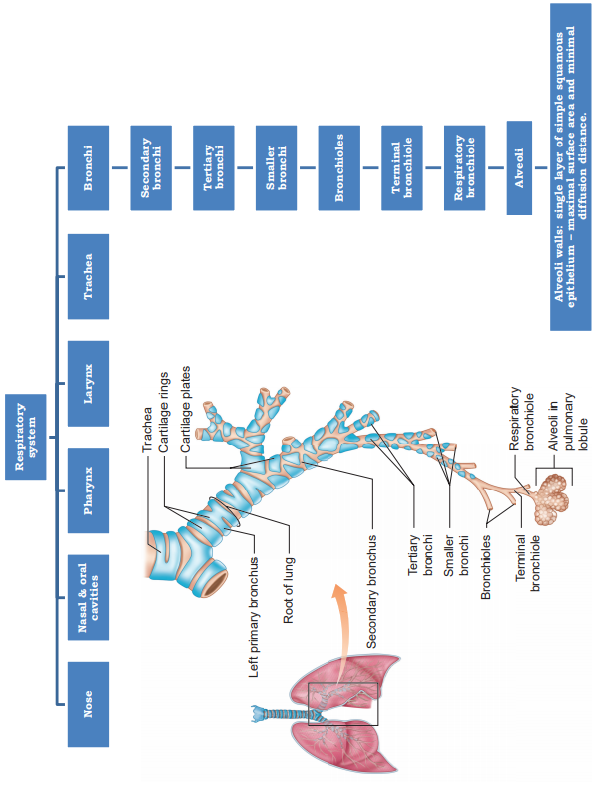Zoology - Amazing Facts, Activity and Summary - Human Respiration | 11th Zoology : Chapter 6 : Respiration
Chapter: 11th Zoology : Chapter 6 : Respiration
Amazing Facts, Activity and Summary - Human Respiration
AMAZING FACTS
The World TB Day is March 24.
Direct Observation Therapy (DOTs) can
treat about 95% of the TB patients.
The surface area of the lungs is
roughly the same size as a tennis court (525 feet long).
It is possible to live with one lung.
The highest recorded ‘sneeze speed’
is 165 km per hour.
Adults breathe around 12 – 16 times
per minute where as new borns breathe around 30–60 times per minute.
Yawning helps us to breathe more
oxygen to the lungs. When our brain senses the shortage of O2, it
send a message to CNS to imbalance to O2 demand and trigger us to
yawn.
Breathing through mouth results in
bladder shrinkage and creates an urge to urinate in the middle of the night.
Most people can hold their breath
between 30 seconds to one minute.
Hiccups are due to eating too fast or having occasional spasms of the diaphragm.
Activity
To
test the presence of CO2
in exhaled air Take two test tubes A and B with few
mL of clear lime water. Blow exhaled air
into A with a help of a straw and pass normal air into B with a help of a
syringe for about 15 times and observe the changes that occur in the tubes A
and B. The lime water (Calcium Hydroxide) in the test tube A turns milky.


Summary:
The process of intake of oxygen rich air and giving out of air
rich in carbon dioxide is generally called respiration. Pollutants and micro
organism are filtered from the inspired air by the hair and mucus present in
the nostrils. The two main steps in the mechanism of respiration are
inspiration and expiration which takes place due to pressure gradient in the
atmosphere and lungs.
O2 is transported in blood in dissolved form and is
also bound to haemoglobin. One molecule of haemoglobin can bind four molecules
of O2. The Sigmoid shape of the O2 haemoglobin
dissociative curve shows increased affinity for each O2 molecule.
CO2 is transported in blood in dissolved form as
carbamino haemoglobin and as HCO3. HCO3 is produced in
RBCs from CO2 and water catalysed by carbonic anhydrase. Breathing
is controlled by medullary respiratory centre.
Respiratory volumes and capacities indicate the amount of air
inspired and expired during normal respiration. Our respiratory system can be
affected by pollutants, pathogens and other chemical substances found in air.
Lung cancer and emphysema cannot be cured and these diseases are common among
cigarette smokers.
People at higher level than the sea level are prompted to
altitude sickness as the barometric pressure is low in those regions.
Surfactant, emphysema, Asthma and Dead space have been discussed. During
vigorous exercise the rate of respiration increases.
Related Topics